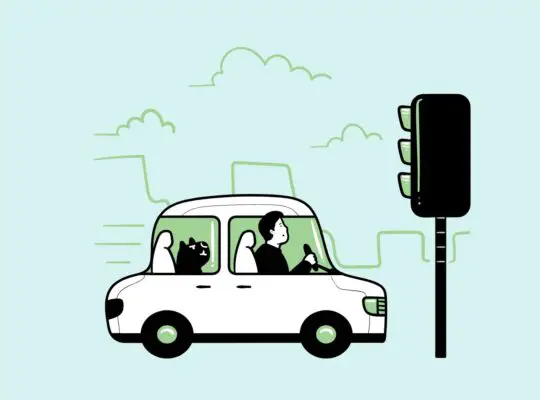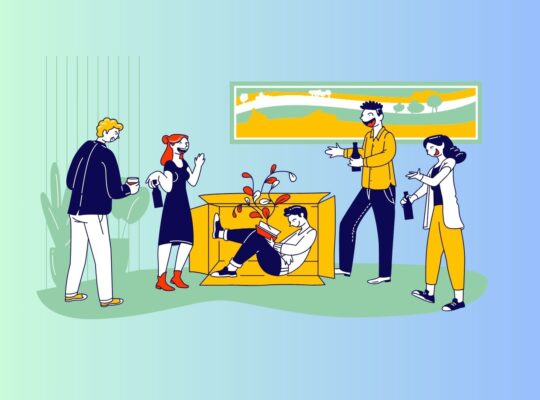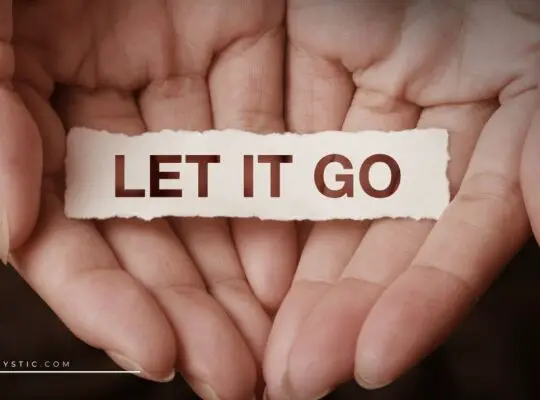In this article: Your journey of outer changes starts with your inner self.
Our innermost thoughts and feelings follow habitual patterns until they become deeply entrenched. Those patterns aren’t always realistic or beneficial. It’s so easy to internalize negative messages about our worth, our capabilities!
It’s human nature to take a couple of failures and generalize that all attempts at great things will end in failure. Year after year we wonder what’s happened, why our lives aren’t going where we meant for them to, and never stop to examine what we’re thinking and feeling.
For many of us, our inner psychological and emotional life is essentially reactive. Things happen to us and we form inner concepts about those events. We shape our beliefs about ourselves based on external events.
Often, we don’t make rational evaluations about our worth or our capabilities. As our innermost self becomes more injured by harsh and unrealistic critics, both inside and out, our path skews off track. Sooner or later, we realize we’re not where we want to be. We yearn for change.
When we consider making changes in life, the first step to take is to assess whether or not we should change our externality first. Externalities are everything that isn’t part of our inner psyche or body.
What is most important to understand is the fact that we need to make inner changes before we can manifest outer changes.
When we start on our journey of change, we must start with our inner selves. We have to challenge all the negative blocks to the outer changes we want to bring about.
The first step is to take inventory of our thoughts and feelings.
Is fear the most prominent emotion we have when it comes to taking risks?
Are we sure of disaster before we even get started?
Say you’ve got an opportunity to move up at work. What’s your inner dialogue saying? Is it “What if I take a new position and screw up? I’ll be a laughingstock!” or is it “This is a great opportunity. I will learn along the way.”
Consider the things we say we want to be or become. For example, we might say “I wish I were more outgoing,” or “I wish I were more confident,” or perhaps just long for some new way to be in life. If what you’ve got isn’t working anymore and what you’re doing isn’t helping, consider a change from deep within yourself.
Internal Barriers to Change: Stagnant Thoughts, Dark Feelings
Much of our ingrained behavior comes from old, obsolete thinking patterns that might have worked well at one point, but now hold us back. We all suffer from a set of habitually destructive cognitive distortions.
Unfortunately, as bad as they are, those patterns feel safe and comfortable. They feel natural and instinctive. As well, the fear of change can hold us down, but we have to push that fear back.
Note carefully though that if we wait until there’s no more fear, we won’t make those inner changes. The key to real, lasting change is to accept and acknowledge our fear—and go ahead with our lives.
We must challenge our maladaptive thinking. Try these techniques to remove barriers to your internal changes.
- Get a solid understanding of your inner mental and emotional perceptions and beliefs. Are you always fighting critical inner voices that try to tell you you’re inadequate? That you aren’t good enough, or capable enough?
- Get accustomed to talking to yourself. A lot of our own critical inner voices need to be confronted by deliberately talking to ourselves. Not surprisingly, this is called self-talk. Positive self-talk is a great way to change our negative thinking.
- Challenge negative thoughts about yourself. If you think “I always mess up,” a simple “No, I don’t. I work hard and have some successes” is a great way to shut down your cranky internal critic.
- It’s helpful to imagine what you’d love for your life to be. What are you like as your ideal self? What’s your work like in that life? Who’s there with you? Visualize what you want—but at the same time, stay grounded in what it’s going to take.
- In the same vein as staying grounded, don’t fall into the daydream trap. It’s easy to get caught up in daydreams and forget to take real steps toward change.
- Challenge every last negative voice that arises within you. Some will be so deeply grooved in your psyche they feel like a completely natural phenomenon. These negative ideas masquerade as the truth when they’re far from it!
It’s important we learn and understand how our own habitual thoughts and emotions can sabotage our efforts to make big changes. Cognitive distortions are rigid, deeply established patterns of thinking that we rarely recognize ourselves as using.
How do we make internal changes when our thoughts and feelings can be traitors? When our own best thinking seems to cause the very problems we need to change? We’re still in charge of ourselves and can make the inner changes we need to.
Learn to Recognize Cognitive Distortions for Rapid Inner Change
Believe it or not, it’s much easier to change our stale patterns of thinking than it is to change our feelings. Emotions don’t bend to rationality, but our thought processes are amenable to change.
As discussed earlier, cognitive distortions are flaws in thought that are easy to fall into but must be recognized before getting out of them.
Have a look at some of the most common cognitive distortions.
Emotional Reasoning
Emotional reasoning is at the top of the list when it comes to flawed thinking that causes us misery. People tend to believe that their feelings are always grounded in fact. “If I feel it, it’s true” is another way to put the error.
If a person feels they’re stupid, or has been made to feel stupid, then cognitively, they make the irrational jump to believing they’re stupid.
Emotions can be so strong they overwhelm our ability to use rational thought. The truth of feelings is simply that feelings are indeed real, but they may not be founded on a fact. Trusting our feelings isn’t always the way to go.
Polarized Thinking
Polarized thinking is also known as “Black and White” Thinking or “All or Nothing.”
This one little flaw in the human psyche is responsible for much of the world’s miseries. Polarized thinking tells us we’ve done a great job or a lousy one. It tells us we are perfect or worthless. There’s no personal progress possible with polarized thinking.
We don’t give ourselves any little bit of credit for gains made. No, we’re either superstars or failures. This is a cardinal feature of the perfectionist, but polarized thinking figures into many different types of personality.
Overgeneralization
If something bad happens in one circumstance, we apply the bad result to all situations even slightly like the situation that went wrong. A bad grade on a writing assignment becomes internalized as “I’m bad at writing,” and we apply that label to ourselves ruthlessly.
Mind Reading/Jumping to Conclusions
Sometimes people think they know others so well that they jump to conclusions about why a person behaves in a certain way. If a friend forgets a lunch date, a person suffering from “mind reading” will imagine that their friend is angry with them or even doesn’t want to be friends anymore. They will then avoid that friend or become passive-aggressive, creating the situation that was at first only imaginary.
Personalization
Personalization is a cognitive distortion in which a person thinks all things are about them or directed at them. A person who personalizes everything tends to compare themselves to others in all ways, as well. If a person is locked in generalization, for example, they might view their inability to come to a party as ruining the event for everyone. It can seem arrogant, but it’s really part of a damaged ego.
Filtering
This is a major cognitive distortion wherein a person takes only one kind of detail and magnifies it. One negative detail overwhelms all the good
Catastrophizing
A person laboring in the “catastrophizing” distortion sees every tiny negative as a huge disaster. An example of this thought process is: “If I don’t get an A on the test, it’ll be awful, I won’t be able to stand it, and I’ll be ruined.”
Note that this follows the same pattern for admittedly more serious issues.
Fallacy of Fairness
In an ideal world, things would be fair. Our world, however, is far from ideal, and people who insist that everything should be fair tend to become disappointed, bitter and resentful. Resentment accumulates, poisoning the emotions.
Conditional Existence
“Coulda, woulda, and shoulda” are the topic here. People are living according to what they think should be or how they think others should act. Naturally, life doesn’t conform to any one person’s ideas about what should be.
First, try to identify what your regular thought processes are. What are the cognitive distortions that are holding you back? How do you change them?
Making Enduring Changes
Herein lies the real challenge. Making changes that last takes effort. It can seem mechanical. For example, keeping a diary of how you think and feel during circumstances will lead you to clarity, and with clarity, comes insight. Insight is the root of successful inner changes.
Still, writing things down can feel awkward. It can be a bit tough to keep up with it. Remember: there are no good changes without work.
Identify The Cognitive Distortions
You have to be aware of what thought processes are trapping you. It’s not possible to fix what you don’t know. Make a list of your thoughts throughout the day that are negative, this allows you to identify which ones you prefer. This exercise also facilitates the evaluation of each problem in a more natural way. David Burns named this exercise “keeping a daily mood log.” Fortunately in modern times there are apps and digital media to use to keep track of and record cognitive distortions.
Tune In To Yourself
Become aware of your body’s reaction to the cognitive distortion. Sometimes those negative, twisted thoughts are not fully formed.
They’re not necessarily clear.
Sometimes they’re not much more than a feeling of one’s stomach rapidly dropping or a tightening in the muscles. Learn to associate those feelings with distorted thinking.
Create Distance
This is one of the rare situations we need to separate ourselves from ourselves. Learn to distance yourself from your own extreme emotional reactions. This takes time, so be patient with yourself.
Is There Any Supporting Evidence?
Examine the distortion. As hard as it may be, turn down your emotions and look at the situation objectively. Ask a friend or family member, do they believe it to be true.
Double Standard Method
We often talk to ourselves very harshly. Would we speak that way to a friend? Of course not! Why not use the same compassion we show others on ourselves? After all, we give our loved second chances and the benefit of the doubt. We offer encouragement to others. We deserve the same kindness from ourselves, to ourselves.
Develop A Continuum
Polarized thinking is all-or-none. Try thinking of events on a sliding scale from 1 to 100. One to ten is too small a range. Give yourself credit for partial successes and every increment of improvement.
Once our inner changes start changing our outward behavior, we may notice a strange trend from some people. Our new self is not always met with acclaim or approval.
Sometimes, people are so accustomed to us being and acting in one way they are shocked when we change. Other times, people have a vested interest in our staying the way we were. In either case, never forget that it’s your life.
How others react to us is a facet of them, not us, as long as we remain respectful of others. The essential element to remember is that we change for ourselves and for our own betterment.
The outward changes that reflect our innermost changes will help us lead a happier life that’s far more congruent with who we are and who we want to become.







